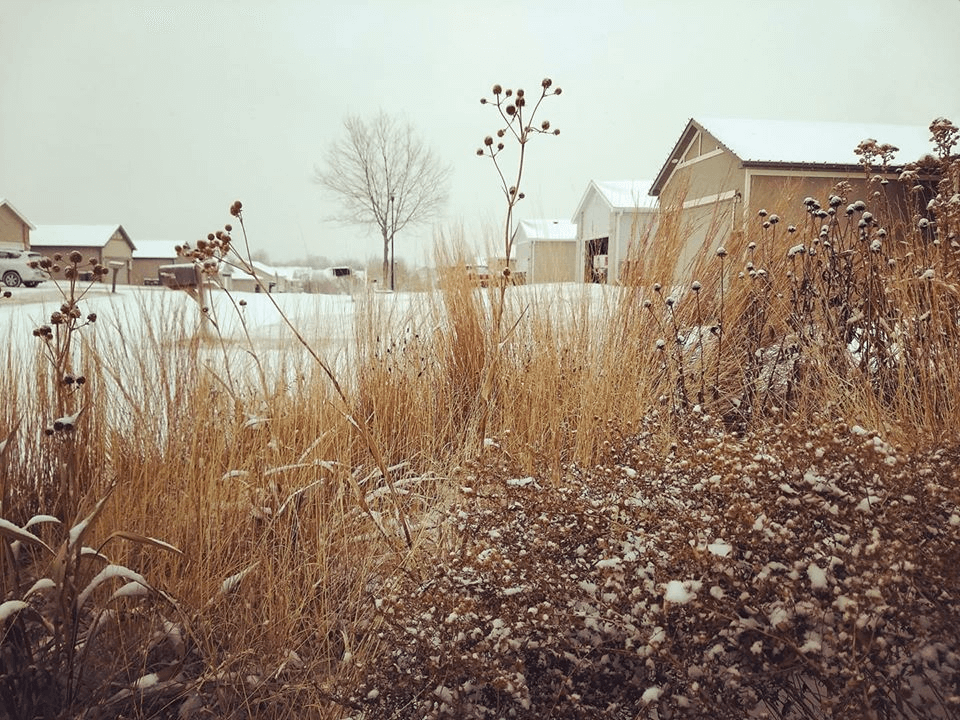
A Plant Sociability Research Journey Example
Oh that’s a cool plant, stiff goldenrod, Oligoneuron rigidum. I wonder if that would work in my garden. Maybe it’s
It’s easy to get excited about a new plant when you’re gardening for wildlife in your local ecoregion, and that’s especially so when the plant is small or just one or three of a kind. But often plants perform differently in home landscapes compared to the wild where there’s more competition; even so, some plants just like to be the boss of others, especially when there’s open space filled with wood mulch.
There are a few general habitat and design rules for small spaces that are pretty much universal (but can absolutely be broken in the right circumstances):
Following are some popular native forbs and grasses whose use might be reconsidered if your garden bed is a few hundred square feet, along with some alternatives. Keep in mind that these plants are commonly native east of the continental divide, but can otherwise serve as proxies or examples for other areas.
Indian Grass (Sorghastrum nutans)
The foliage is lovely in early summer, as are the autumn seed heads and fall leaf color, but it will self sow heartedly and flop in autumn. A good alternative is a shorter bunchgrass like sideoats grama (Bouteloua curtipendula). Both grasses are clumpers that cover the ground plain, which is great for green mulch aficionados.
Common Milkweed (Asclepias syriaca)
Monarchs lay a lot of eggs on this host plant, but it will get tall and it will most certainly spread via underground runners until you have a milkweed stand and not much else. Try purple milkweed (Asclepias purpurascens), Sullivant’s milkweed (Asclepais sullivantii) or butterflyweed (Asclepias tuberosa) depending on if it’s a part sun (A. purp), full sun and moist (A. sull) or full sun and dry (A. tub) site in your landscape.
Blue Mistflower (Conoclinium coelestinum)
Tons of insects come for the masses and masses of late summer blooms, and the fall color is a nice yellow. In ideal soil — moist and loamy — it will colonize fully. With drier conditions and clay soil, alongside other plant competition, it will mass and drift more modestly. I don’t have an alternative, but can say that with plant density and root competition it’s worth a try to contain.
Maximilian Sunflower (Helianthus maximiliani)
It’ll get tall but more importantly it’ll run. In its native tallgrass that’s a good thing because it’s a very beneficial plant for insects and bugs. A Coreopsis might be a good alternative.
New England Aster (Symphyotrichum novae-angliae)
It’s going to get leggy and then it’s going to get too tall and flop in almost every garden. The former is solved with dense underplanting, but you can’t do much for the rest unless all your plants are tall to buttress one another. Maybe consider aromatic aster (Symphyotrichum oblongifolium) or smooth aster (Symphyotrichum laeve); the former prefers it drier while the latter is more adaptable.
Canada Goldenrod (Solidago canadensis)
I think it was Sting who sang about fields of goldenrod. Maybe not. I’ve never had to plant canadian goldenrod because it blows in, and once it gets going it runs all over the place. Both showy goldenrod (Solidago speciosa) and zigzag goldenrod (Solidago flexicaulis) clump fairly well in tight-knit plant communities, but they will spread moderately if in beds filled with mulch. Zigzag is considered a shade plant, but I’ve found success in sunnier spots where it spreads less, even though I would not call it aggressive even in ideal conditions or moist shade.
Gray-Headed Coneflower (Ratibida pinnata)
This one is a common issue. Evolved to thrive in the tallgrass prairie where it has other tall plants to lean on, as a specimen it grows quite tall then bows down in a most penitent fashion. Better to stick with pale purple coneflower (Echinacea pallida) or even Mexican hat (Ratidiba columnifera), but the latter acts more like an biennial unless it’s allowed to self sow as it prefers.

Oh that’s a cool plant, stiff goldenrod, Oligoneuron rigidum. I wonder if that would work in my garden. Maybe it’s

Sometimes we might think a garden left standing over winter isn’t as pretty, even though we know the ecosystem value
